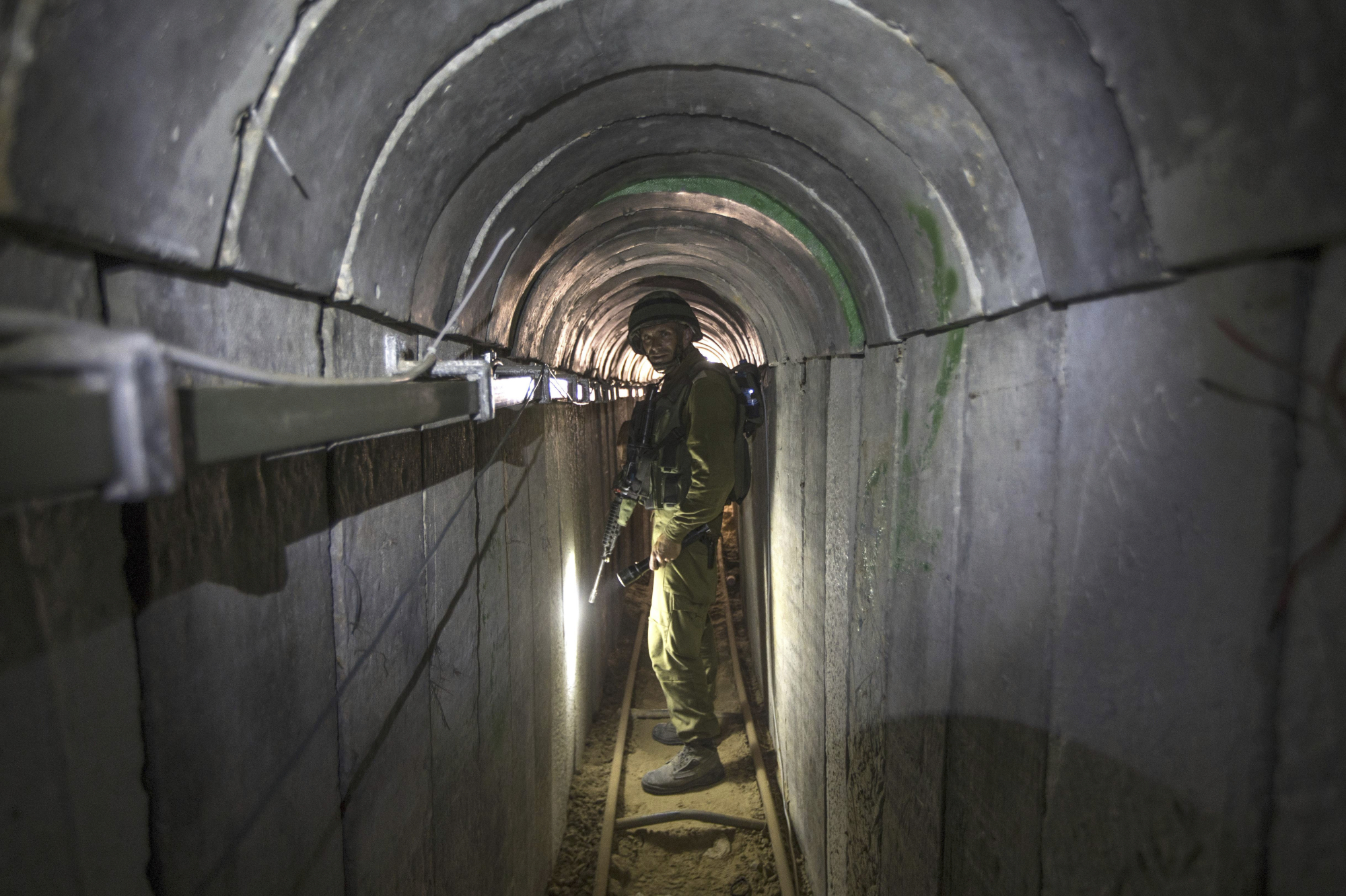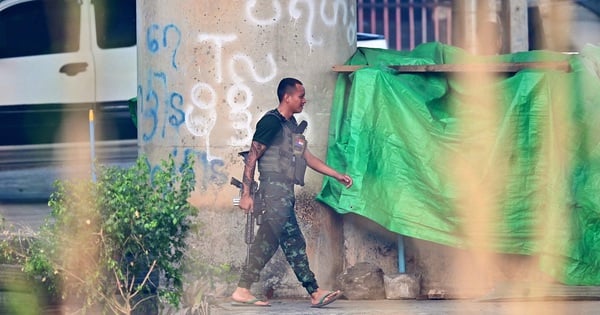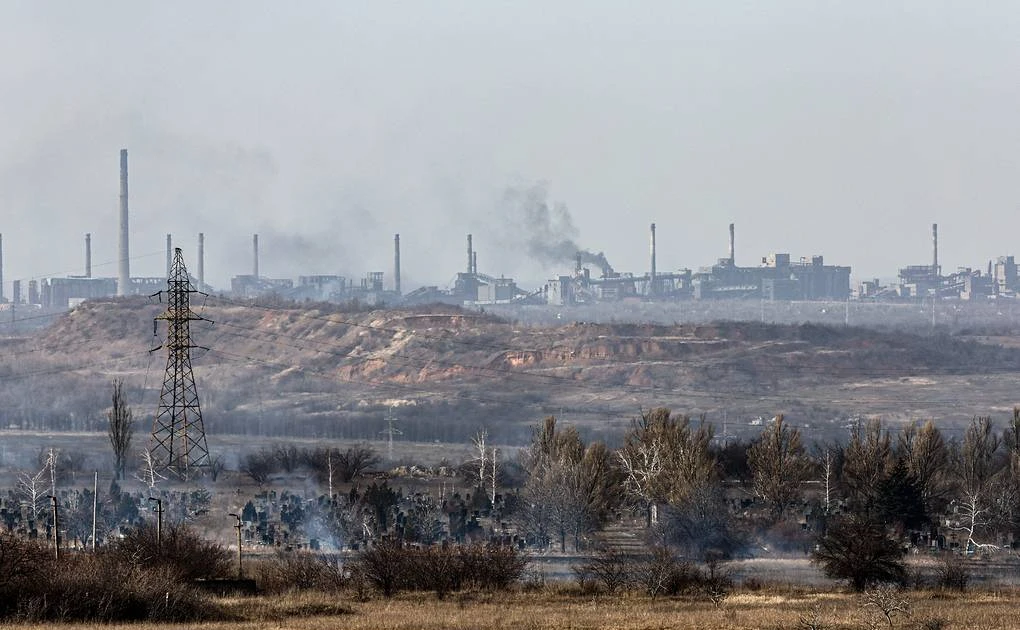A week after Israeli forces surrounded Gaza City and cut it off from the southern part of the Gaza Strip, there has been no sign that the army has been able to inflict serious damage on Hamas' tunnel system.

Israeli troops inside a Hamas tunnel. Photo: Reuters
On Wednesday (November 8), a select group of foreign journalists in Israel were taken to an area of the battlefield, which journalists described as “the edge of Gaza City.” Nearly every building had been destroyed or severely damaged by aerial bombardment and ground attacks.
Videos show Merkava tanks massed in a camp surrounded by high sandbanks. The defensive sand walls would likely deny Hamas fighters the opportunity to attack and flee.
To an analyst, the position and posture of that 401st Brigade company told us a lot about what the Israelis might want. It told us that the advance would be slow, street by street.
It also shows that the most difficult battle of Gaza City, the underground battle, has yet to begin in earnest. Some tunnels may have been identified and destroyed as the army advanced, but that may be only a small fraction.
The 34 of its soldiers that Israel has admitted to having killed so far were apparently attacked individually or in small groups, and as the tunnel fighting begins, the number is likely to rise rapidly.
To enter the tunnels, Israeli forces will have to use decades-old and long-forgotten military methods to overcome the challenges of fighting underground.
Identify the entrance
To gain a fighting position in the tunnels, Israel had to identify as many entrances as possible. For a system believed to be as long as 500 kilometers, that number was probably in the tens of thousands.
Most were hidden inside residential buildings, garages, industrial facilities, warehouses, under landfills and, after more than a month of bombing, under rubble.
But Israel has been preparing to tackle the tunnels since its 2014 offensive in Gaza. Constant surveillance by drones, using sophisticated software that analyzes movement patterns and can recognize individual faces and match them to a database of known Hamas members, has revealed hundreds or thousands of entrances.
Informants have probably added more information, and it would not be surprising if Israel's specialized tunnel warfare unit Weasels (Samur) knows half of all Hamas tunnel access points.
Mapping the tunnels
Knowing the entrances is helpful, but even if all the known entrances were attacked, that would not prevent Hamas from using the tunnels. Most tunnels have multiple entrances at each end, so some will always be open.
Tunnel builders have a huge advantage because they know the network inside out. The Israeli software can suggest connecting patterns of movement to reveal that two points can be connected, but it does not reveal exact routes or underground intersections.
To map the tunnels with high precision, the commandos had to go inside, facing enormous dangers and difficulties. First, there was the technical aspect: GPS tracking devices were useless down there because satellite signals could not penetrate the ground.
The solution will likely be to use devices that combine magnetic sensors, which are unaffected by underground travel, and motion sensors like those used in pedometers. A crude and imprecise system, but better than nothing.
Go around
Once inside, Israeli soldiers will most likely operate with night vision goggles instead of flashlights. They will not be able to use radio waves to communicate with units on the ground, but will have to use field telephones, technology that is more than 100 years old.
The soldiers would coil the wires, connecting them as they moved, which would further slow their advance. Even if they did not encounter Hamas resistance, they would have to stop at every fork in the road and assess where the branches would lead.
A small force would have to be placed on each side of the tunnel to defend against counterattacks. Whenever they found a vertical shaft, which was almost always used as an entrance, they would have to pause, map the location, and relay it back to the surface units.
Surface units will have to find the entrances and occupy the area. Samur has previously released videos of tunneling robots that could be useful as scouts, scouting out passages and sending back video with night vision capabilities. But they can only be used on one level because they can't cross obstacles.
Survive Inside
For practical purposes, everything has been analyzed so far on the assumption that there was no resistance in the tunnels. That is completely unrealistic: Hamas was certainly prepared to put up a fierce resistance.
Most of the tunnels were likely booby-trapped with improvised explosive devices (IEDs). These could be wired to remote controls, but they could also be triggered by specialized detonators that react to light, vibration, noise, movement, and even increased carbon dioxide levels in the presence of humans.
The tunnels are connected by wires and cables that provide power, internet, telephone and military lines. Hamas may have surveillance and detection equipment that allows them to know where the Israelis are so they can remotely detonate bombs at that exact location.
The Israelis could not simply cut all the wires, because some of the detonators could be triggered when their power supply was cut. As anyone involved in mining knows, explosions in confined tunnels are much more dangerous than those on the surface. They spread further and suck up oxygen, so those who survive the initial blast often suffocate.
Hamas could also ignite incendiary compounds that deprive the enemy of oxygen and create thick, toxic smoke. This would leave the tunnels largely undamaged, allowing Palestinian militants to use them after forcing their enemies to retreat.
Israel would almost certainly have emergency breathing equipment, but wearing bulky masks and oxygen tanks makes communication and fighting more difficult.
Fight with what?
Fighting in urban areas is difficult, requiring specific knowledge and equipment; fighting in tunnels is even more difficult and specialized. As military tunnelers discovered years ago, conventional weapons are too large and cumbersome to use in confined spaces.
It is likely that the Israelis will carry smaller caliber weapons with suppressors, not intended to reduce noise but to block muzzle flash.
Regardless of which gun they choose, the tunnel warriors will have limited firepower as only two can fire at once, one kneeling, the other standing, blocking the firing range for the rest of the team.
Hand grenades and rifles have almost certainly been eliminated, as have any rocket launchers. Flash and stun grenades could give Israel an advantage by temporarily blinding and deafening enemies, but it is questionable whether they can be used without endangering fellow soldiers.
As per centuries old custom, they would certainly be armed with combat knives or machetes, as hand-to-hand combat was certain to occur.
There has been much discussion about Israeli attack dogs, but an expert on military and police dogs has dismissed this idea because their actions are very unpredictable in extremely stressful combat conditions and there have been many cases where, under the flash of lights and noise of a gunfight, they have attacked their owners.
Hoang Viet (according to AJ)
Source












































Comment (0)